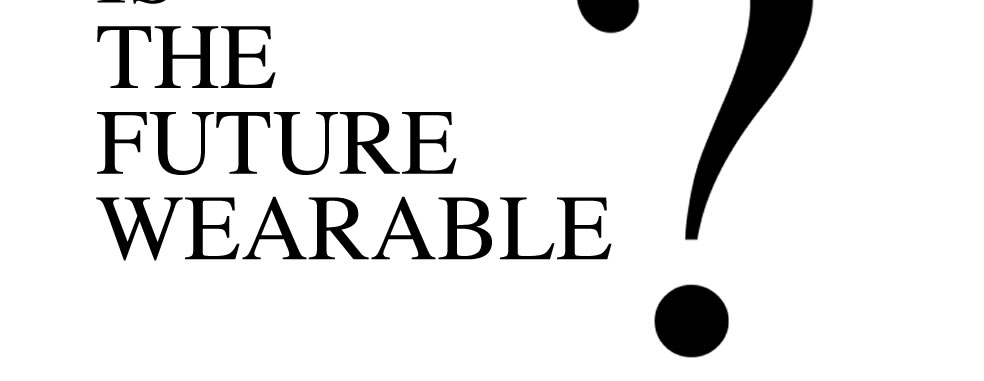


We live in an age when fashion and technology are converging in a new form called “wearable.” Technology interaction has changed drastically the past few years. Mobility is now part of everyday life. Carrying phones, tablets, and lab tops is as natural as wearing a wool sweater in the fall. If technology companies have their way, soon mobile phones will be intertwined in the fabrics of our clothing, allowing internet access with the touch a button on a sleeve. If the future is about wearing technology visibly, the way we dress now will become obsolete as the world moves toward 100% connectivity. However, there are still many challenges to overcome before cyborg fashion becomes the defining the style of a generation.
So far devices characterized to integrate fashion with style have failed to make a social impact; all have fallen by the wayside, most likely left stuffed in a box by the few buyers hoping to unload a their useless purchase like an old toaster. Present technology evolves so quickly: in style today, outdated tomorrow.
Fashion is about an emotional connection with an item: a shoe, a shirt, a bag. Personality and attitude is reflected by what a person wears, be it sensual or feminine, masculine or youthful. The colors we wear show our inner feelings: dull, vibrant, or understated. Technology devices will have to become more individualistic for different people to be wearable, personable items of expression or a particular behavior pattern. Clothing represents a person’s choice.
In fashion, certain brands appeal to certain groups of wearers. Age groups and subcultures are the best example of this. Teenagers and their parents go their separate ways in malls. Technology brands will have to adapt. Additionally, certain body types fit better in certain styles and silhouettes, and technology brands will have to learn this as well. Lastly, fashion is unpredictable. Research, trend forecasting is guessing with no certainty, only hope that the people may like it. There is no antenna to gage style desire. In order to attract attention in fashion and be cool, rules have to be broken, and tech brands are not generally known to be rule breakers.
Aesthetics will also play a large role in the style acceptance of wearable tech. An aesthetically pleasing design often determines what people will openly wear on their bodies. Currently, no tech brand has been able to come up with a design this writer would wear on his sleeve or over on his face.
Ultimately, in order for technology to become “wearable” it has to fulfill two basic fashion functions: the product has to be comfortable for the wearer and it has to look good.
So far devices characterized to integrate fashion with style have failed to make a social impact; all have fallen by the wayside, most likely left stuffed in a box by the few buyers hoping to unload a their useless purchase like an old toaster. Present technology evolves so quickly: in style today, outdated tomorrow.
Fashion is about an emotional connection with an item: a shoe, a shirt, a bag. Personality and attitude is reflected by what a person wears, be it sensual or feminine, masculine or youthful. The colors we wear show our inner feelings: dull, vibrant, or understated. Technology devices will have to become more individualistic for different people to be wearable, personable items of expression or a particular behavior pattern. Clothing represents a person’s choice.
In fashion, certain brands appeal to certain groups of wearers. Age groups and subcultures are the best example of this. Teenagers and their parents go their separate ways in malls. Technology brands will have to adapt. Additionally, certain body types fit better in certain styles and silhouettes, and technology brands will have to learn this as well. Lastly, fashion is unpredictable. Research, trend forecasting is guessing with no certainty, only hope that the people may like it. There is no antenna to gage style desire. In order to attract attention in fashion and be cool, rules have to be broken, and tech brands are not generally known to be rule breakers.
Aesthetics will also play a large role in the style acceptance of wearable tech. An aesthetically pleasing design often determines what people will openly wear on their bodies. Currently, no tech brand has been able to come up with a design this writer would wear on his sleeve or over on his face.
Ultimately, in order for technology to become “wearable” it has to fulfill two basic fashion functions: the product has to be comfortable for the wearer and it has to look good.
